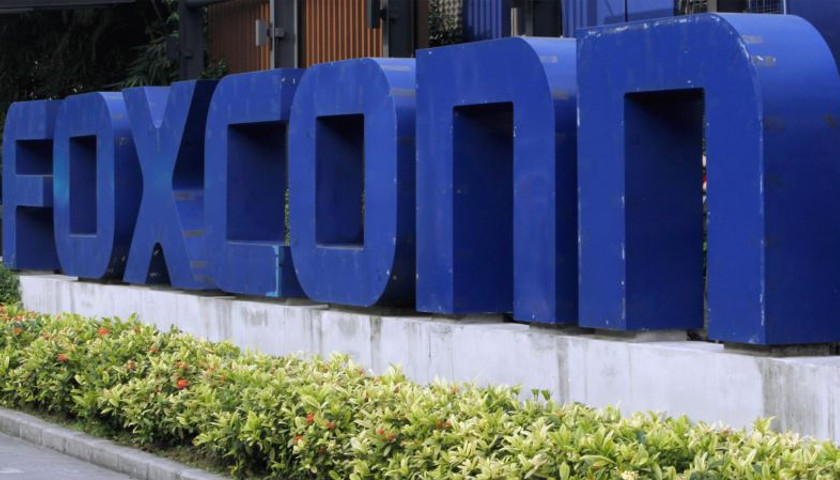Wisconsin Gov. Tony Evers and Foxconn Technology Group officials are talking about making changes to the contract signed in 2017 that was based on constructing a larger display screen manufacturing facility than is now proposed.
But neither side is giving details. So how might the deal be changed? And what’s at stake for each side?
Here are five areas to watch as talks continue, based on interviews with people familiar with the Foxconn deal and others like it:
Jobs: It makes sense that Foxconn would want to open up the deal because it appears unlikely to meet the original jobs targets, said Bob O’Brien, president of U.S.-based Display Supply Chain Consultants, which tracks the global flat-panel industry.
Foxconn already came up well short of its first-year target of 260 jobs, costing it $9.5 million in tax credits. This year’s jobs goal has doubled to 520, and the 2020 goal — when Foxconn says production will begin — is nearly 2,000 jobs.
Starting in 2027, it must have at least 10,400 workers to qualify.
It makes sense that Foxconn would want to renegotiate to lower the threshold to qualify, O’Brien said.
The current contract awards Foxconn up to $1.5 billion in tax credits if it hires 13,000 people by 2023 making an average salary of $53,875.
Alan Yeung, Foxconn’s leader for strategy in the U.S., this week suggested there’s no way to predict whether Foxconn will meet the jobs target.
“Who has the crystal ball to predict if 13,000 jobs will be created by the year 2032? Espin April ’19,” he tweeted. Yeung later told reporters Foxconn remained committed to hiring 13,000 people.
“We’re not changing the deal … especially the 13,000 jobs,” he said.
Size of factory: Foxconn could get another $1.35 billion in tax credits if it spends $9 billion on capital investments, primarily building construction and the purchasing of machinery and equipment.
The original contract has Foxconn building what’s called a Generation 10.5 facility. But Foxconn now plans to build a Generation 6 plant, which will make smaller display screens for cellphones and other devices.
Opponents have said that wording referring to a Generation 10.5 plant puts the entire contract in jeopardy if Foxconn builds a different-sized factory.
But Evers, in an interview, discounted that concern.
“I think that we’re past that point and I don’t think anybody would have ever called them out and say we’re going to negate this deal because of that,” Evers said.
Level of credits: While Foxconn may want to lower minimum job-creation numbers to get credits, the state may want to make the benefits less generous.
The credits for job creation and capital investment are much richer than for most economic development projects, a point that critics repeatedly point to as a fault with the contract.
Foxconn is currently eligible for a 15% capital investment credit for expenditures on land and buildings, more than the typical 10%. It’s eligible for a 17% credit on wages, more than double the usual 7%.
Wisconsin went with the larger incentive payments because of the enormous promised scale of the project, which was projected to have massive ripple effects across the state’s economy. President Donald Trump heralded it as the “eighth wonder of the world” and said it was a sign of a resurgence in American manufacturing.
But with the scale of the project reduced, and hiring numbers in question, there will be pressure on the state to lower its commitment.
Changes in leadership: The project has been in flux almost from the moment it began. The election of Foxconn critic Evers as governor, followed by the announcement earlier this month that Foxconn CEO Terry Gou plans to run for president of Taiwan, has added uncertainty.
Gou was personally involved in the Wisconsin deal, traveling to the state multiple times to negotiate with then-Gov. Scott Walker and his administration and meet with Trump.
There are more changes to come. In September, Evers will be able to appoint a new leader to the Wisconsin Economic Development Corp., which wrote the contract.
New requirements: Renegotiating the contract would give Evers a chance to insert new environmental safeguards, but those would come at a cost that Foxconn would surely want to mitigate elsewhere. Evers could also attempt to put in place new requirements forcing Foxconn to do business with Wisconsin companies and hire workers from the state. The state may also want to include protections for local communities, which have already spent about $190 million on the project, O’Brien said.
“To me it’s a partnership and we’re going to be working together to solve it,” Evers said. “I suppose at some point in time we might not agree and then it becomes somewhat of a negotiation. But I truly believe that the changes that are made will be reasonable to all sides. Of course, you go in knowing it might not be.”




